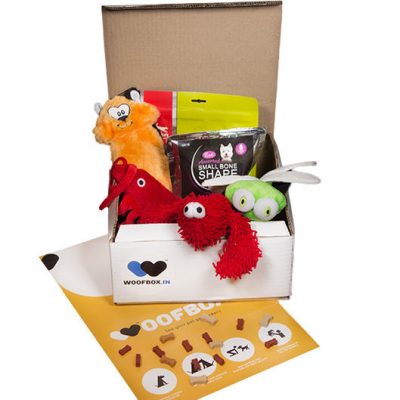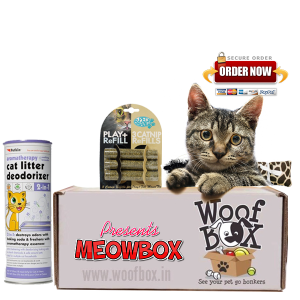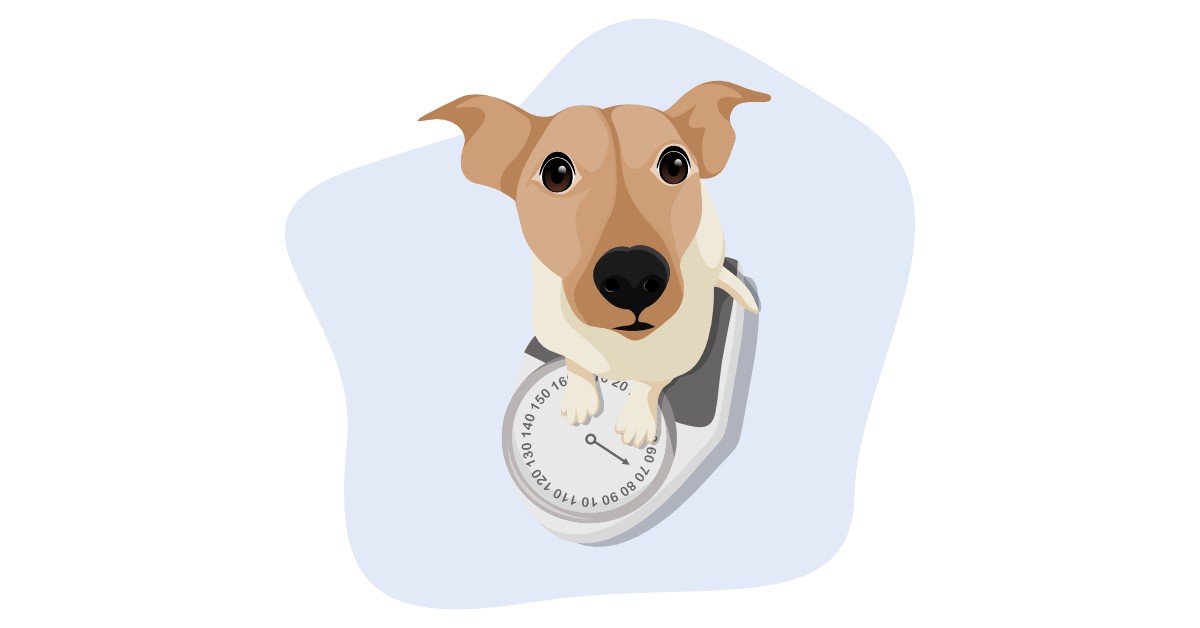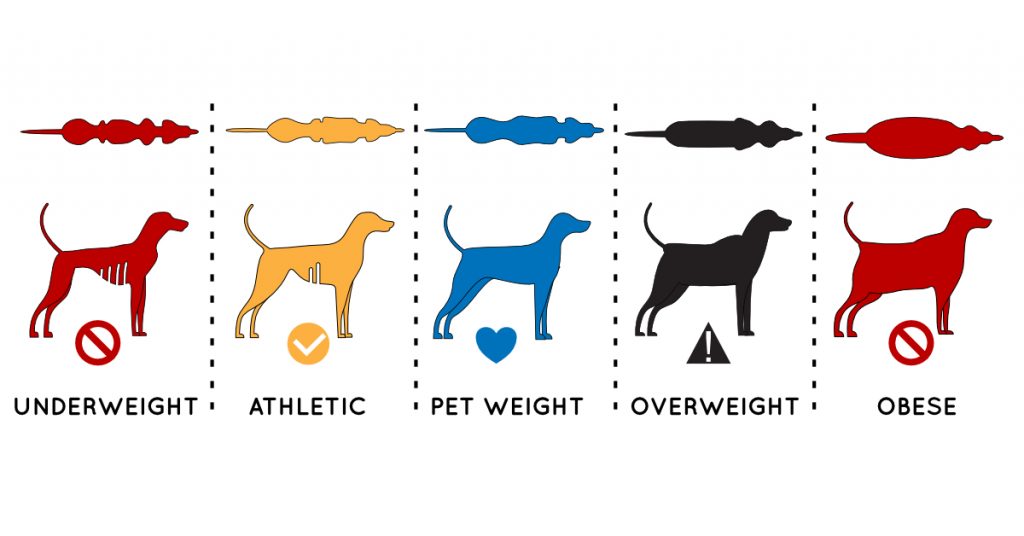Table of Contents
Obesity – A Common Problem in Dogs
“A dog is the only thing on earth that loves you more than you love yourself,” – Josh Billings.
Without any doubt, dogs have been ‘human’s best friend for thousands of years, but there is much more to our four-legged friends. Dogs are great; they provide us with a lot of love, loyalty, companionship, emotional support and are always there when we need them.
Like we take care of our health, it’s increasingly important and challenging to take care of our four-legged friends. Because unlike us, they don’t communicate their problems, primarily health-related.
Obesity or excessive body fat is one such widespread and preventable problem in dogs, and it is much more than a cosmetic issue. Dog Obesity results in an overweight condition affecting our pet’s health and well-being and is directly linked to several health issues.
Canine Obesity is associated with excess fatty tissue and results from energy intake exceeding the energy released. The number of obese pets we see around is increasing day by day, so it is essential to check your dog’s body weight as it can adversely affect your pet’s life span. Obesity in dogs can affect their daily routine and impart them from carrying out physical activities with ease. In addition, the risk of severe ailments like diabetes, cancer, and heart diseases increases when your dog is overweight.
There was a study done by Purina several years ago called “Purina’s Landmark Life Span Study in Dogs” that followed dogs over many, many years, and it showed that keeping pets at their ideal weight would extend their lives by two years
Obesity in dogs
Obesity in dogs is nothing but an imbalance of energy intake and energy released. It is most common in old-age dogs because of their inability to perform more physical activities. A dog is obese if it weighs more than usual for its breed and gender, and it may result in adverse health effects that could shorten your dog’s life span. In simple words, if I say, any dog who even weighs 10% off the average weight can be considered obese.
What Causes Obesity in Dogs?
Many factors can increase your dog’s risk of being overweight, including their age, reproductive status, food intake, physical inactivity, and if they are neutered. Some breeds appear to be at higher risk of Obesity, indicating that genetics may play an important role, with unneutered adult dogs weighing less than the neutered dogs of the same breed.
Below are some of the major factors which cause Obesity in dogs:
Age:
Like humans, aged dogs become less active, so they need less energy. So, it’s no surprise that if food intake is not decreased proportionally, they can quickly gain weight. However, in aged dogs, physical activity is relatively more minor; as a result, they exceed the energy intake and gain weight.
Neutering:
Spaying or Neutering refers to the removal of an animal’s reproductive organ. This process is generally carried out at a young age- the same time as a natural decrease in energy needs. Oestrogen also slows down fat production, with predictably post-spaying levels, so owners unaware of this change and still feed their pets an equivalent amount will see a weight gain in their dog.
Disproportionate Meals:
Overfeeding is one of the significant reasons for dog obesity. Surprisingly, some of the owners are still unsure of what amount of meals to feed their dogs. The size of the cup used for measuring the dry food and the size of the bowl used to serve food can affect the amount of food fed to your pet. Providing anything and everything to your dog can encourage Obesity.
Lack of physical activity:
The principle of gaining weight is as simple as that with humans. If your pet is not burning calories in proportion to the amount of food they have consumed, it will result in energy stored as fat and, ultimately, gaining weight and becoming obese. Only indoor pets are at a higher risk of being obese.
Table Scraps:
Treat too big can lead to Obesity. Feeding high-calorie food and table scraps can encourage many pets to overeat and also exacerbate this situation. In some adult dogs, up to half the calories they need can be supplied as human food, specifically in toy breeds.
Sometimes, the owner cannot recognize dog obesity, and ultimately, the pet gains weight due to the reasons mentioned above.
How to know if your dog is obese?
You are wondering how to know if your dog is gaining weight? The first thing you need to do is acknowledge that there is something wrong as you look at your dog.
Unfortunately, we are swamped with pictures of heavy dogs, and we fail to recognize a fit dog. Here are a few signs you can look for to determine whether your dog is in good shape or is gaining weight.
Examine Body Shape: [Learn here Exact Timeline: 1.15 Seconds]
The most straightforward way to check whether your dog is fat is by examining its body shape. While you look at your dog from above, if you notice that your dog looks oval-shaped, he is probably gaining weight. While, on the contrary, if you see a defined waist and a straight build, your pup is probably healthy.
 Fell your dog’s Ribs:
Fell your dog’s Ribs:
Examining the coverage of your dog’s ribs is one of the easiest ways to identify if your dog is gaining weight. If you can quickly feel the dog’s ribs without pressing too hard, then the dog is fit. Unfortunately, it’s pretty tricky with overweight dogs to feel the ribs because of too much fat around them.
Look at your dog’s sides:
A swinging stomach is a clear indication of dog obesity. When you look at your dog from the side, look for a raised waist rather than hanging down and oval-shaped. In addition, your dog should have a tucked-up abdomen; if not, then you might need to make it lose some pounds.
Check for Fat Pads:
Excessive fat on your dog’s body is an indication of being obese. Overweight dogs have fat pads on the top of their hips, so inspecting your dog’s hip will help you discover whether your dog is healthy or overweight.
Behavior:
Obese and overweight dogs are physically inactive and spend a lot of time scarfing down their food. So if you see that your dog is facing trouble while walking, trouble breathing during an activity, and becoming a couch potato, it might be fat.
If your dog is obese, make sure to visit the vet and do regular body assessments. Your vet can help you understand the actual problem considering the age and breed of your dog. You can also weigh in your dog to know whether it’s fit or overweight. In addition, your vet can also provide you with an estimated body mass which will help you reach your dog’s ideal body weight.
Health Issues associated with Obesity
Dog Obesity is associated with several health issues. While having an overweight pup seems adorable, those extra pounds can prove to be quite harmful to dogs and expensive for owners due to growing health issues caused by this unwanted condition.
Quality and life span:
Obesity can take up to 2 years off your dog’s life span compared to healthy dogs. Quality of life also slows down as they get tired quickly.
Arthritis:
It is one of the significant problems which overweight dogs face. Extra weight puts pressure on joints, the cartilage present in the joints collapse, which leads to arthritis. Medications can cure the pain, but weight loss can do wonders in arthritis for dogs.
Heart and Lungs:
Though dogs aren’t in danger for coronary arterial disease like humans, Obesity in dogs has been related to mild heart changes, reduced respiratory function, and tracheal collapse. We don’t have any particular reason to say that Obesity causes these diseases, but it complicates the situation and makes the condition difficult to treat. Obesity can be a leading risk factor for heart and lung diseases.
Skin Diseases:
Overweight in dogs can be one of the reasons for skin diseases. Obese dogs have extra skin folds, which can cause infection due to bacteria. In addition, overweight dogs generally have an unhealthy-looking coat as it’s difficult to groom them nicely.
Recovery after Surgery: Weight loss in obese dogs helps recover faster from significant surgeries like cranial ligament similar to human ACL.
Inflammatory Conditions:
Fat tissues are a source of constant inflammation throughout the body, putting your dog at risk for other diseases. You might not possibly see the changes, but you need to be aware of them.
Obese Dogs are bound to have health problems. There are many other health issues associated with dog obesity like diabetes, kidney disease, liver problem, certain cancers, mobility issues, and high blood pressure. Health issues related to Obesity affect almost every body part. Obesity is easier prevented than treated.
Treatment of Obesity in Dogs
Treatment of Obesity in dogs focuses on weight loss to maintain a healthy weight for a healthy lifestyle. As in humans, a decrease in caloric intake and increased exercise is the most beneficial and easy way to weight loss. Your vet can provide all the necessary information regarding meal portions, appropriate food options, and exercise suggestions.
Eliminating table scraps and other labeled food is extremely important. Feeding a high-protein and low-fat diet helps during weight loss as protein and fiber stimulate metabolism and increase sufficiency. Providing green vegetables like green beans can be an excellent alternative to treats. Homemade meals aren’t recommended as they lack essential vitamin and mineral requirements. Instead, one can use specially formulated dog food alternatives that are available in the market. They are developed to keep weight loss at focus.
It would be best if you made dietary changes gradually to avoid gastrointestinal problems. Consult your veterinarian before feeding any new food item. You can also mix a portion of his currently provided food with the latest one recommended while feeding. Follow this for at least a week to see whether the new food suits your pet or not. (On the sides: also ready about Kale as a go-to snack for dogs!)
Treating Obesity through exercise
Exercise is as important as diet when your ultimate goal is weight loss. There are various options for physical activity, including leash walking 15-20 minutes twice a day and playing fetch games. You can subscribe to our “go-fetch-it WoofBox.” Taking your pet to a dog daycare twice or thrice a week can also encourage physical activities.
Aim for your dog to increase its daily physical activity by 25%, or as long as he can tolerate it. Before following any exercise routine, check with the veterinarian and ensure that your dog is free from health issues that hinder physical activity, such as joint problems or heart disease.
If your dog gulps the food down, you may use a unique slow-feeding bowl that requires your dog to work hard to reach the meal. You can also use treat dispensing toys that dispense treat when your dog rolls it. You can also subscribe to our “Trick-to-Treat WoofBox,” packed with highly interactive toys. All these activities will ultimately help in weight loss.
To treat Dog obesity, you can keep a check on few things like following up with a veterinarian, monitoring your dog’s weight, and maintaining the ideal body shape once it has been achieved.
Special Meal Plan for Overweight Dogs
Once you are on the path to get your dog back in shape, it is essential to adjust feeding, particularly during weight loss. As with humans, the first and foremost method to slim down is to cut on calories, while with dogs, you must ensure that calorie intake is in control; only then will you achieve the goal. Take your dog for blood work to know about any health issues, food allergies. Also, keep in mind the below steps before planning a unique meal plan for dog obesity.
Measure the meals:
Measuring the portion of your dog food is a crucial step for any weight-loss routine. Keep track of how many grams of kibble you feed your pet daily. Use a measuring cup. Since your pet cannot keep track on its own, you need to maintain a dairy for your little furry baby.
Make a schedule:
Make a proper schedule for feeding your dog. Offer meals on a set schedule and make it a habit for your dog to eat as per schedule only. For example, serve the meal for 10-15 minutes and take away food that’s not consumed.
Limit Snacks:
Dogs intake a lot of calories in addition to their regular kibble. Limiting snacks can prove to be helpful when you are aiming to make him lose weight. These snacks can include anything from treats to biscuits. Find out where the extra calories are coming from and limit them.
Be consistent with the portion and meal frequency; only then can you maintain your dog’s good health.
Dogs Prone to Obesity
Certain breeds have a higher risk of becoming overweight. If you have one, you need to take special care of everything mentioned in this article to keep your dog healthy and happy.
Labrador Retrievers, Golden Retrievers, Beagle, Pugs, Bulldog, Indian Pariah Dogs, and Cocker Spaniels are some of the breeds of dogs at higher risk of being obese.
Labrador loves to eat; if you let them eat, they can gain weight very quickly. Not letting them eat might sound cruel, but it is not worse than allowing them to gain weight and lose years of a fruitful life.
Beagles get lazier as they grow. Just like Labradors, beagles also love to eat. Suppose you left your breakfast on the table and find it gone after returning; it’s definitely a Beagle. This behavior makes it quite challenging to cut on their calories, but it’s not impossible.
Putting on weight can prove life-threatening for pugs as they are born with ‘BAS,’ which refers to Brachycephalic Airway Syndrome, which means breathing for them is not an easy task. So if you own one, make sure to maintain their weight and keep them slim.
Bulldogs are less active and greedy eaters. Since they are naturally heavy, it becomes difficult to know if they are overweight. Check if their waist is slimmer than their hips to see if they are overweight or not. Research shows that 63% of golden retrievers are overweight. Of course, you cannot resist their charm and tend to overfeed them.
Conclusion
Dog Obesity is the most common nutritional disease affecting pets in India today. A dog, irrespective of the breed, can turn obese if not taken care of properly. Therefore, every pet owner must take full responsibility for their dog’s health and well-being. If your pet is affected by Obesity, they are not at fault; it’s you who has been careless throughout, so try to make things better in every possible way you can.
Obesity can be scary when you get to know what it can do to your adorable little ones. Obesity is the primary reason for the degraded quality of life in pets. The pet parents often ignore weight issues, and sometimes it’s too late to reverse the effect that you may lose them. Make it a habit to say no to overfeeding your pup and engage them in physical activities.
Realizing a problem takes more time than anything else, so visit your pet regularly and switch your pet to a healthier life.




 Fell your dog’s Ribs:
Fell your dog’s Ribs: